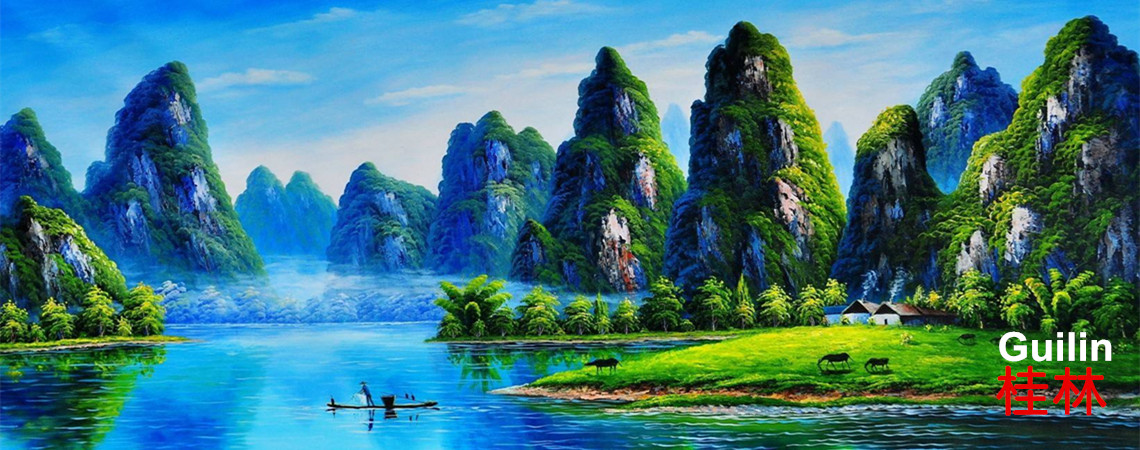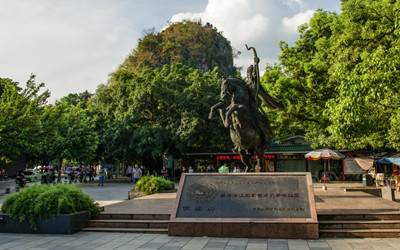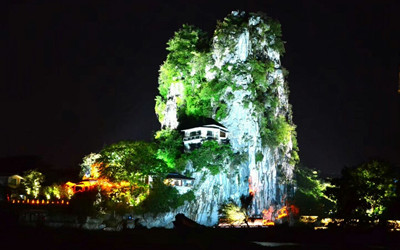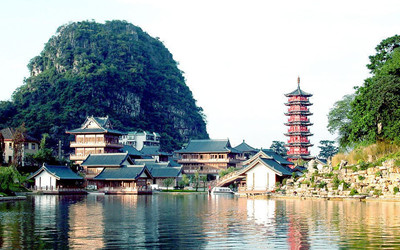Skype: neodalle-travel
Tel: +86 135 7447 2266
E-mail: sales@visitaroundchina.com

 subduing waves. Moreover, it was on this hill that a temple in commemoration of General Fubo was built in the Tang Dynasty (618-907), which gave rise to the name Wave-Subduing Hill.
subduing waves. Moreover, it was on this hill that a temple in commemoration of General Fubo was built in the Tang Dynasty (618-907), which gave rise to the name Wave-Subduing Hill.What to see ?
Natural scenery of rocks and stalactites as well as artificial cloister and pavilions compose the fantastic and unique sight of the hill. At the foot of the hill lie the Pearl-Returning Cave, the Thousand-Buddha Cave and the Sword-Testing Rock, all of which have great appeal. A gracious cloister and tearoom were built on the southern slope. Halfway to the hill is the Tingtao Pavilion (Pavilion of Listen-to-Waves). Stone stairs wind up towards the hilltop on the western slope of the hill. The Viewing Platform on the stairway is an ideal spot for taking in the panorama of Guilin.
 The Cloister lies on the second terrace of the Wave-Subduing Hill and combines the first and second terrace in an ingenious manner. In the well-tended garden by the cloister, trees and flowers grow prosperously. In front of the garden lies a pavilion which features a more than 300-year-old iron boiler which weighs above 1,000 kilograms (2204.6 pounds). It is said that it can boil enough food for one thousand people. Therefore, it was given the name 'Thousand-People Boiler'. When wandering alongside the cloister up to the third terrace, it is possible to rest in the tearoom featuring a court.
The Cloister lies on the second terrace of the Wave-Subduing Hill and combines the first and second terrace in an ingenious manner. In the well-tended garden by the cloister, trees and flowers grow prosperously. In front of the garden lies a pavilion which features a more than 300-year-old iron boiler which weighs above 1,000 kilograms (2204.6 pounds). It is said that it can boil enough food for one thousand people. Therefore, it was given the name 'Thousand-People Boiler'. When wandering alongside the cloister up to the third terrace, it is possible to rest in the tearoom featuring a court. Connecting with the Pearl-Returning Cave, the Thousand-Buddha Cave lies hidden in the hill. It has three levels with a total area of 133 square meters (159 square yards). Visitors climbing up along the winding stairs will find themselves attracted to the 239 statues of Buddha in 36 enshrines from the later Tang Dynasty situated on the upper level, along with mural paintings from the Song Dynasty (960-1279). All of the artworks bear exquisite carvings. Among them, a curiosity can be found - a painting of Mi Fu, a renowned artist, done by the artist himself, because few of Mi Fu's works are intact today.
Connecting with the Pearl-Returning Cave, the Thousand-Buddha Cave lies hidden in the hill. It has three levels with a total area of 133 square meters (159 square yards). Visitors climbing up along the winding stairs will find themselves attracted to the 239 statues of Buddha in 36 enshrines from the later Tang Dynasty situated on the upper level, along with mural paintings from the Song Dynasty (960-1279). All of the artworks bear exquisite carvings. Among them, a curiosity can be found - a painting of Mi Fu, a renowned artist, done by the artist himself, because few of Mi Fu's works are intact today. Legend has it that the General Fubo tested his sword on the rock, which gave it its present shape. When the general negotiated with the offenders in the Pearl-Returning Cave and reached a deadlock, he drew the sword and cut rocks off the huge pillar. The opponents were startled and immediately retreated.
Legend has it that the General Fubo tested his sword on the rock, which gave it its present shape. When the general negotiated with the offenders in the Pearl-Returning Cave and reached a deadlock, he drew the sword and cut rocks off the huge pillar. The opponents were startled and immediately retreated.
'How far do you want us to turn back?' they asked.
'Back to where my arrow falls.' the general replied steadily.
'Ok, we agree. Let us then see how far it will fly.'
General Fubo climbed up to the Fubo Hill and shot his arrow, which flew a distance of three hills till it landed on the field from which the offenders had originally come. The offenders retreated as agreed. From then on, the rock was known as 'Sword-Testing' in honor of the valiant general.
Travel Tips
Add: Fubo Hill Park, Guilin City,China
Entrance Fee: CNY 30
Opening hours: 06:00 to 18:30 (December to March), 07:10 to 18:00 (April to November)
Transport: Take bus no. 2 or 203, and get off at Fubo Hill Station.
 Ask Questions ?
Ask Questions ?